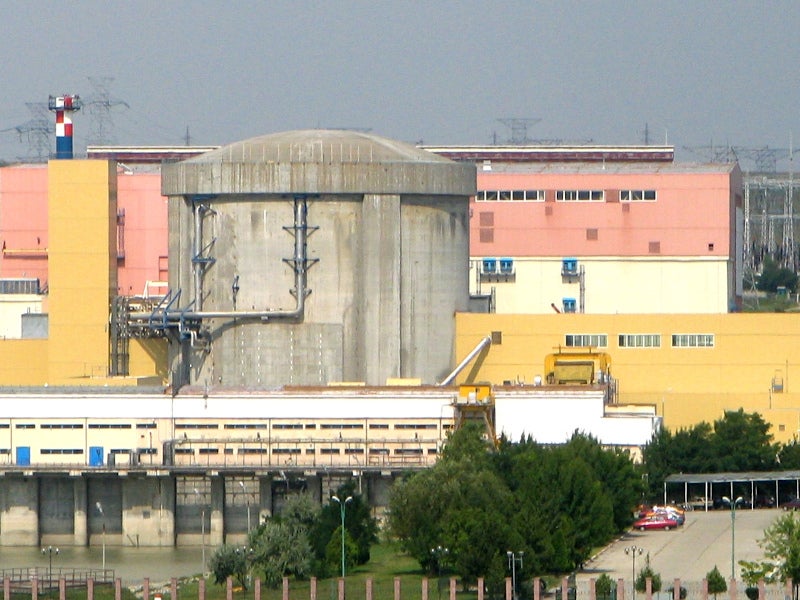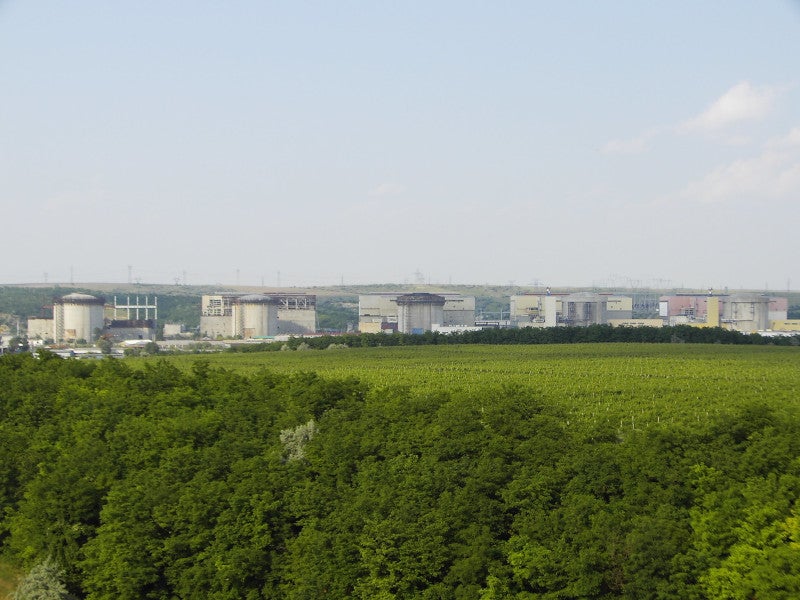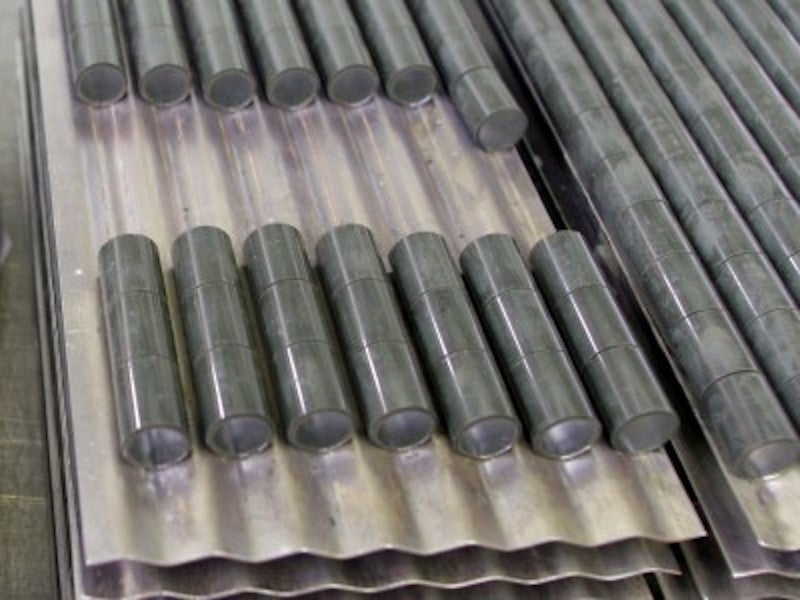The Cernavoda nuclear power plant (NPP) is the first and the only nuclear power generating facility operating in Romania. Operating since 1996, the facility, with two 706MW operating units, currently fulfils approximately 18% of the country’s electricity demands.
The Cernavoda NPP uses Canadian Deuterium Uranium 6 (CANDU-6) pressurised heavy-water reactor technology.
The facility is owned and operated by the state-owned Societatea Nationala Nuclearelectrica (SNN), which is jointly owned by Romania’s Ministry of Energy (82.49%), Fondul Proprietatea (7.47%), and other small stakeholders.
Although the Cernavoda NPP was earlier planned to be expanded with two additional CANDU-6 units with the Chinese assistance, it has now been decided to build the new units (units 3 and 4) and refurbish the unit-1 of the facility in partnership with the US.
The US Department of Energy (DoE) initiated a draft Intergovernmental Agreement for the expansion and modernisation of the Cernavoda NPP, as well as for the civil nuclear power sector in Romania in October 2020.
The Cernavoda nuclear power plant expansion and modernisation project is estimated to cost up to £8.1bn ($10.6bn).
The expansion will create around 5,000 to 20,000 during the construction period and 5,000 direct jobs during operations. The units are expected to come online by 2030 and 2031 respectively.
Cernavoda nuclear power project background
Although the foundation for the Cernavoda nuclear power plant was laid in the 1960s, the plan was finally materialised in 1980.
The construction works at the Cernavoda NPP site, which was originally designed to accommodate five similar CANDU 6 units, was started in 1983. However, only unit-1 was brought into operation in 1996, while the construction of the remaining planned units was suspended in the early 1990s.
The construction of unit-2 was restarted in 2001 while its commissioning taking place in November 2007.
Deal with China for the Cernavoda NPP expansion
Romania started attracting foreign investors to expand the facility by constructing the remaining units at the site in 2009.
Subsequently, China General Nuclear Power Corporation (CGN) was selected as the investor and a joint letter of intent was signed in this regard in October 2014.
It followed the signing of a binding and exclusive cooperation agreement between Candu Energy and CGN’s subsidiary China Nuclear Power Engineering (CNPEC) for two CANDU-6 reactor units at the Cernavoda plant in July 2014.
SNN and CGN signed a memorandum of understanding for the construction of units three and four at the facility in November 2015.
It was followed by the signing of a preliminary investors’ agreement with CGN in May 2019.
Scheduled for commissioning from 2024 onwards, the new units of 720MW gross capacity each were expected to annually deliver up to 11TWh of carbon-free electricity to the Romanian grid.
Location and plant operation
The Cernavoda nuclear power plant is located in the Dobrogea region of south-east Romania, near the Danube River and the Danube-Black Sea channel.
The facility uses natural uranium is used as a primary fuel, and heavy water as moderator and coolant.
Unit-1 and unit-2 of the facility supplied a cumulative total more than 119TWh and 65TWh of electricity respectively as of 2019.
The refurbishment of unit-1 aims at extending the operating life of the reactor by 30 years.
CANDU-6 reactor details
The Cernavoda NPP was the first nuclear power plant in Europe to adopt CANDU technology.
The CANDU water reactor’s core comprises several hundreds of small diameter fuel channels instead of one big pressure vessel with a separate low-pressure moderator and high-pressure fuel cooling systems. The reactor’ technology allows on-power refuelling.
Designed by Atomic Energy of Canada (AECL), the reactor devices are placed in a cool, low pressure moderator that puts the operations at low accidental risk.
The reactor also has low consequences of accidents due to reactivity fluctuations. The excess relativity from the fuel is low as the reactor uses low fissile content fuel. The long processing of prompt neutrons in the reactor precludes rapid changes in power levels.
Contractors involved
ROMENERGO and AECL together signed the contracts for the takeover of the CANDU system licence and for the design and procurement of the nuclear equipment for unit-1 in December 1978.
ROMENERGO, Ansaldo, and General Electric (GE) were engaged for the development of the conventional part of the unit-1 in February 1981. GE’s local team agreed to provide support for all maintenance services at the power plant for 33 years beginning 2004.
A consortium of AECL and Ansaldo was awarded the contract for the management of the power plant construction in August 1991.
SNC Lavalin was awarded two engineering, procurement and construction (EPC) contracts to install and improve the nuclear safety systems at the existing units of the power plant in 2011 and 2012, respectively.
SNN signed an eight-year service extension agreement for approximately £92m ($120m) with GE Steam Power to provide full maintenance and services for the two operational steam turbines and generators of the power plant in July 2019. As part of the contract, GE Steam Power was also to perform a planned maintenance outage on the unit-2 turbine generator after 12 years of service.
SNC Lavalin was contracted for the fuel channel and feeder assembly inspections on the Cernavoda unit-1 nuclear reactor in June 2020.
For the modernisation of unit 1 at the power plant, approximately 400 tonnes of concrete was demolished under a decommissioning contract awarded to the Romanian company Diamond Drilling SRL.
Tyrolit supplied the machinery for the cutting and removal of 22 running metres of reinforced concrete walls with 4.5m height and 75cm thickness, as well as nine 5m-high concrete columns measuring 2.5mx1.5m and 1.5mx1.5m.





